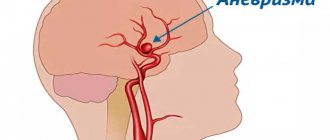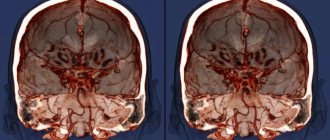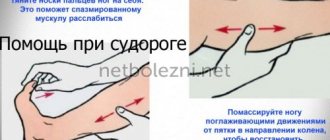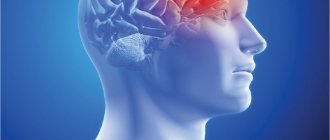Epilepsy is a chronic brain disease that manifests itself as uncontrollable seizures. They arise as a result of a pathologically enhanced impulse in the cerebral cortex. The disease is characterized by a wave-like course - after an attack there comes a period of remission. Clinical manifestations of the disease depend on the location of the lesion, the severity and type of seizures. At the Yusupov Hospital, neurologists diagnose epilepsy using the latest methods. For complex therapy, modern medications are used that are effective and have a minimal range of side effects.
Causes
One of the main causes of epilepsy is considered to be a hereditary predisposition: if parents have a history of seizure symptoms, then the child is more likely to develop them. Epilepsy also develops under the influence of the following reasons:
- Traumatic brain injury;
- Cerebrovascular accidents;
- Cerebral vascular dysplasia;
- Volumetric formations in the cerebral cortex;
- Neurosurgical intervention;
- Infectious diseases of the central nervous system;
- Previous ischemic or hemorrhagic stroke.
The occurrence of epileptic attacks is caused by the presence in the cerebral cortex of a stable focus with epileptic activity. Convulsive activity from the primary focus can spread through commissural fibers, cortical neuronal complexes, and the centrencephalic system of the brain. In the presence of increased convulsive activity over a long period of time, secondary lesions arise. They can, under the influence of certain factors, become independent and independent. As a result, the attack in the primary focus fades, but not in the secondary. This picture is observed in patients after two years of illness. Over the course of some time, tertiary foci of seizure activity may develop in the cerebral cortex.
Epilepsy can develop under the influence of the following provoking factors:
- Hormonal imbalances;
- Alcoholism and drug addiction;
- Chronic stress;
- Excessive emotional stress;
- Chronic fatigue.
Secondary attacks of epilepsy occur in patients suffering from brain tumors, cerebral vascular pathology, after hemorrhage in the head, due to poisoning with toxic substances.
It is very important to identify the disease early to reduce the likelihood of complications. Which doctor treats epilepsy? For quality therapy, it is necessary to be observed by a neurologist, epileptologist, or psychotherapist. As clinical symptoms progress, assistance from a physiotherapist or pharmacologist may be required.
Diagnostics in our mental health center
You should contact our clinic after the first episode of exacerbation. We will carry out all the necessary hardware and laboratory tests. If epilepsy is suspected, an encephalogram is performed, but even with frequent seizures, the picture on it may remain completely normal, so anamnesis (including a description of the course of pregnancy) is of great importance in diagnosis.
A computed tomography scan is required, and if necessary (in particular to confirm the presence of a tumor), a PET scan (positron emission tomography) is performed, and blood flow in the brain is assessed. The “standard” set of general clinical studies (blood and urine tests) is supplemented with karyotyping to exclude hereditary factors and differentiate with other types of epileptic syndromes.
Important!
To determine the tactics of further therapy, it is important to identify the cause that provoked the development of the pathological process. Etiological factors can be residual - the disease has ended, so the consequences are treated, or procedural - with the active course of the pathology (for example, a tumor). In such a situation, parallel treatment of the underlying cause is necessary.
Frequency of epileptic seizures
The frequency of attacks can vary from once every 2-3 months to single or multiple daily. A seizure can be triggered by sleep disturbances, stress, excessive alcohol consumption, long stays in a stuffy room, sudden flashes of light, etc. At the moment, the specific factor influencing the increase in the frequency of seizures is not yet known.
Expert opinion
Author: Daria Olegovna Gromova
Neurologist
Epilepsy has been considered one of the most dangerous and common diseases for many years. According to WHO statistics, 4-10 people per 1000 population suffer from seizures. Doctors note an annual increase in cases of onset of epilepsy. Thanks to numerous clinical studies, it has been proven that the disease is registered 2-3 times more often in countries with low and medium levels of development. This is due to the presence of a greater number of provoking factors, such as infections and a high level of injuries. According to statistics, 80% of patients with epilepsy live in such conditions.
The exact causes of seizures are still unknown. Doctors distinguish several types of seizures, as well as the factors that cause them. When selecting therapy, neurologists and epileptologists at the Yusupov Hospital take into account all the data. If you follow the rules of prevention and take anticonvulsants, about 70% of patients can live for a long time without seizures. An individual epilepsy treatment plan is developed for each patient at the Yusupov Hospital. The drugs used meet European quality and safety standards. In addition, patients are provided with personalized preventive recommendations that minimize the risk of epilepsy relapse.
Forecast and prevention measures for epilepsy
Modern medicine knows more than 40 different forms of epilepsy. Each of them has its own consequences. Knowing the exact cause of the disease and having a clear idea of its course, it is possible to make a prognosis for its further development. In 70-80% of cases, epilepsy responds well to treatment. Some types of illness go away on their own without treatment. As a rule, this applies to epilepsy that manifests itself in childhood. The attacks stop during adolescence, and the mental and physical development of people returns to normal.
The timely correct identification of the specific form of epilepsy is of fundamental importance. The treatment strategy and prognosis of the course of the disease depend on this.
The danger of this disease lies not so much in epileptic seizures, but in their consequences - injuries suffered due to them and acquired pathologies. The right decision in the treatment of epilepsy would be to use preventive measures to reduce the frequency of seizures.
There are no specific methods for preventing this disease, but general recommendations include:
- a healthy lifestyle, which includes giving up alcohol, smoking and drugs;
- moderate physical activity;
- proper nutrition and rest;
- elimination of emotional shocks and stress;
- timely treatment of infectious diseases;
- prompt reduction of high temperature;
- constant monitoring of blood pressure;
- avoiding overheating or hypothermia of the body.
With the right therapeutic approach, compliance with the dose and regimen of anticonvulsants, the consequences of epilepsy can be significantly minimized.
Precursors of epileptic seizures
The first harbinger of epileptic seizures is an aura. It is individual for each patient. Thanks to the constant warning signs, patients can warn others about the onset of an attack or independently move to a safe place.
There are the following types of aura that precede the onset of an epileptic attack:
- Hallucinations;
- Sharp contraction of the muscles of the upper or lower extremities;
- Repeating the same movements;
- Burning, crawling or tingling sensation in various parts of the body;
- Sharp deterioration in mood.
The duration of the aura is several seconds. During this time, patients do not lose consciousness.
Types of seizures in epilepsy
Depending on the cause of occurrence, the following types of epileptic seizures are distinguished:
- Idiopathic – occurring in the presence of epilepsy in close relatives;
- Symptomatic – occur after a traumatic brain injury, infectious or tumor lesion of the brain substance;
- Cryptogenic – the causes of occurrence cannot be determined.
The external manifestations of a convulsive syndrome are determined by its type. If the pathological focus is localized in one hemisphere of the brain, simple or complex seizures occur.
Make an appointment
Simple partial seizures
Against the background of simple convulsions, the patient does not always lose consciousness. Clinical symptoms depend on the location of the pathological focus in the cerebral cortex. The average duration of simple partial seizures is two minutes.
Neurologists identify the following main signs of the disease:
- Emotional lability;
- Hallucinations of various types;
- Twitching in various parts of the body;
- Cardiopalmus;
- Feeling of nausea;
- Frequent feelings of deja vu;
- Difficulty understanding and reproducing words.
Complex partial seizures
The duration of complex partial seizures is one or two minutes. An aura appears before the attack begins. There is uncontrollable crying and screaming, repetition of words, and performance of certain movements. At the end of the seizure, patients are not oriented in space and time. A simple partial seizure of epilepsy can develop into a complex seizure.
Generalized seizures
Generalized seizures occur against the background of total brain damage. They are as follows:
- Tonic;
- Clonic;
- Tonic-clonic;
- Atonic;
- Myoclonic.
With tonic spasms, unconscious muscle contractions occur. Patients are bothered by severe pain in the muscles of the back, upper and lower extremities. Tonic convulsions rarely lead to fainting. The attack lasts no more than twenty seconds. Tonic seizures can occur during sleep.
Patients with epilepsy are less likely to experience clonic seizures. They manifest themselves as uncontrolled paroxysmal muscle contractions. During convulsions, foam is released from the patient's mouth. He loses consciousness. Paralysis may develop. Clonic seizures occur due to severe stress, traumatic brain injury, cerebrovascular accident, or brain tumor. During an attack, short-term muscle tension is replaced by relaxation. The attacks quickly follow each other.
The most typical and characteristic of an epileptic attack are tonic-clonic convulsions. Their duration varies from 1 to 3 minutes. If tonic-clonic seizures persist for a longer period of time, calling an ambulance is recommended. Neurologists distinguish tonic and convulsive phases in the course of an attack. In the tonic phase, the patient loses balance and consciousness, in the convulsive phase, involuntary muscle contractions occur. After the attack is over, patients do not remember what happened.
Tonic-clonic seizures may also be accompanied by the following symptoms:
- Increased salivation;
- Sweating;
- Involuntary tongue biting;
- Injury as a result of uncontrolled actions;
- Involuntary urination or defecation;
- Blueness of the skin.
Atonic seizures occur after a traumatic brain injury, stroke, infectious inflammatory processes, or in the presence of a brain tumor. During an attack, the patient loses consciousness for a while and falls. In some cases, convulsions can be expressed by twitching of the head. The attack lasts about 15 seconds. At the end of it, the patient does not remember what happened.
Myoclonic seizures are characterized by rapid jerking of various parts of the body. The attack resembles jumping inside the body. Most often, muscle contractions occur in the upper half of the body, the area of the upper and lower extremities. Myoclonic spasms can occur when falling asleep or waking up. A symptom of an attack may be hiccups. The duration of the attack is several seconds. During myoclonic seizures, patients do not lose consciousness.
Consequences and complications of epilepsy
If left untreated, epilepsy constantly progresses. First of all, this is expressed in the frequency of seizures. And if in the initial stages they occurred once every few months, then in the absence of treatment a person can experience them several times a week. The consequence of every seizure is the destruction of nerve fibers, which can ultimately lead to swelling of the brain.
In order to more accurately answer the question of why epilepsy attacks are dangerous, it is necessary to proceed from:
- type of disease;
- patient's age;
- degree of brain damage;
- the presence of symptoms characteristic of epilepsy;
- duration of an epileptic attack;
- timeliness of treatment;
- quality of prescribed therapy.
Epilepsy in children interferes with their normal physical and mental development. The consequences of epilepsy in adults are quite extensive.
Injuries after epilepsy attacks
During a seizure, the patient loses control over his body. In this condition, the risk of serious injury is greatly increased. If a person loses consciousness, then when falling, the following may occur:
- traumatic brain injury;
- limb fracture;
- bruises of varying severity.
An epileptic seizure occurs regardless of where a person is and what he is doing. It can take you by surprise at work, on vacation, in transport, etc.
Accidents
Sudden seizures can cause traffic accidents. A patient with epilepsy should refrain from swimming in water, as during convulsive attacks he may drown. There is an increased risk of work-related injury, so people with epilepsy need to create a safe working environment. A severe seizure can also result from a fall from a great height.
Intellectual impairment
30% of patients with epilepsy experience deterioration in intellectual abilities. Memory also decreases due to the disease. A patient with epilepsy should, in principle, avoid activities that require increased attention and focus, as this may provoke a seizure. Intellectual impairment due to epilepsy is more common in children. In adults, decreased mental abilities are a consequence of temporal lobe epilepsy.
Behavioral distortions
Epilepsy affects people's behavior. The patient's personality may change beyond recognition. His mood becomes changeable. A constant feeling of anxiety eventually turns into anger. A person feels the need to defend himself, so he becomes aggressive. Other patients with epilepsy, on the contrary, begin to behave emphatically politely and show increased concern for both themselves and others. Behavioral distortions in this disease are purely individual and are not necessarily present in every patient.
Mental changes
Epileptic seizures have a devastating effect on the functioning of the brain, so patients often experience mental changes. If epilepsy is not treated, they will constantly increase. The hardest thing is for patients with pronounced, severe attacks that do not go unnoticed for them. Such patients are depressed and depressed. Mental changes are triggered by the death of neurons, so it is very difficult to fight the feeling of emptiness and despair.
Psychological problems
People diagnosed with epilepsy experience difficulties with social adaptation. They face misunderstanding from others, which is associated with misconceptions about this chronic illness. Many patients tend to self-isolate because they feel like a burden to loved ones. To improve the condition of a patient with epilepsy and alleviate the consequences for his psyche, it is necessary to combine drug treatment with psychotherapy.
Status epilepticus
A condition in which convulsive seizures follow one after another and in their intervals the patient does not regain consciousness is called status epilepticus. It is a complication of epilepsy that was not treated in time. In addition to blackouts, status epilepticus is also characterized by incompletely generalized convulsive seizures. The condition is life-threatening, since respiratory arrest often occurs during attacks, and is often the main cause of death in patients with epilepsy.
Status epilepticus has three phases:
- Tonic. Lasts for 30 seconds. During this phase, the patient loses consciousness, his face turns pale, breathing slows down and stops. The patient's limbs are tense and extended, the chest freezes while inhaling.
- Convulsive. Within 10-12 minutes, the patient's arms, legs and tongue tremble. He may bite his tongue and cheek. Often foam comes out of the mouth. In this condition, involuntary urination or defecation is also possible.
- Comatose phase. The patient does not regain consciousness, his pupils are dilated and his muscles are relaxed. The condition has features similar to deep sleep. It can last for hours or even days.
Coma after an epileptic attack
People with status epilepticus often fall into a coma from which they may not recover for a long time. This is due to incorrect first aid. When the patient is in a comatose phase, he should not be awakened. All measures should be aimed at eliminating cerebral edema, which develops due to the destruction of neurons.
Nocturnal epilepsy
In one third of patients, epilepsy attacks occur at night. Pathological signs may appear when falling asleep, during sleep, or during awakening. Nocturnal epilepsy occurs under the influence of the following factors:
- Hereditary predisposition;
- Suffered traumatic brain injury;
- Excessive consumption of alcoholic beverages;
- Sleep disorders;
- Prolonged psycho-emotional stress.
The duration of a nocturnal epilepsy attack varies from a few seconds to five minutes. Most patients do not remember the seizures that occurred. Some people clearly describe the sensations they experience. An epileptic attack that occurs during a dream is accompanied by the following manifestations:
- A sharp, causeless awakening;
- Feeling of nausea, which may result in vomiting;
- Severe headache;
- Tremor;
- Pronunciation of unusual sounds;
- Speech impairment.
During a nocturnal epilepsy attack, patients may perform rash actions. They get down on all fours or pretend to ride a bicycle. You can suspect the presence of a nocturnal attack based on the following indirect attacks:
- Tongue bite:
- Traces of blood on the pillow after waking up;
- Bruises and abrasions on the body;
- Painful muscle syndrome;
- Wet bed due to loss of urinary control;
- Uncontrolled urination;
- Waking up in an unusual place (on the carpet, on the floor).
These symptoms are individual for each patient. They appear with one degree or another. Therefore, neurologists believe that nocturnal epilepsy attacks are very difficult to diagnose.
Rolandic epilepsy
Epilepsy of this type is focal and genetically determined. It manifests itself in rare attacks at night, they affect one half of the face with the tongue and pharynx. The Rolandic type is characterized by partial epileptic seizures without loss of consciousness.
The first sign of onset is tingling or numbness on one side of the face, lips, gums, or tongue. Afterwards motor paroxysms develop.
Make an appointment
Questions for the doctor
Make sure your doctor knows about any seizures in your life so that he can offer appropriate treatment.
A person with epilepsy should provide the doctor with information about the time, duration and frequency of seizures, as well as after what events the seizures occur.
Some people keep a seizure journal to record information about what was happening at the time, including time of day, alcohol or caffeine consumption, mood, sleep status, and other factors.
You should ask your doctor:
- Does he see any patterns in the seizure history?
- Can he recommend general safety tips?
- What environmental factors should be considered?
- Do you need treatment and can it help?
- What are the treatment options? What are the side effects?
- Should you live with someone?
- Is it worth buying a seizure alert device?
- Should I see an epileptologist? This is a neurologist who specializes exclusively in the treatment of epilepsy.
Alcoholic epilepsy
This type of epilepsy develops in patients who abuse alcohol. Seizures occur due to irreversible pathological processes in the cerebral cortex. Epilepsy attacks caused by alcohol intoxication most often occur in patients suffering from the following concomitant diseases:
- Atherosclerosis;
- Consequences of traumatic brain injury;
- Brain tumors;
- Residual effects of previously suffered infectious and inflammatory diseases of the brain.
The cause of the disease may be aggravated heredity. The symptoms of alcoholic epilepsy have some peculiarities. The disease does not necessarily begin with a convulsive syndrome. Initially, the following pathological signs appear:
- Increased salivation;
- Marked weakness throughout the body;
- Paleness of the skin;
- Blueness of lips;
- Dizziness;
- Strong headache;
- Loss of consciousness;
- Nausea, vomiting;
- Uncontrolled urination;
- A spasm of the vocal cords that causes a person to emit a high-pitched scream.
An attack of alcoholic epilepsy can result in respiratory arrest and death.
Treatment of symptomatic epilepsy
When selecting a treatment program, specialists pursue one goal - stopping attacks without significant side effects and returning the person to a full-fledged lifestyle. With this form, the timing of the start of therapy is important. The earlier the diagnosis is made and treatment started, the higher the likelihood of a favorable prognosis. Taking into account the etiology, it is quite possible not only to stop the pathological process and remission, but also to cure it.
Typically, therapy is carried out on an outpatient basis at our medical center. Consultations with a doctor at home are possible. Some will find it convenient to stay in a hospital for a short time, where comfortable multi-bed or individual rooms are available. Here you can undergo all diagnostic and therapeutic procedures.
The disease is treated using various pharmacological groups of drugs (benzodiazepines, barbiturates, valproates, combination drugs). The necessary medicine is selected individually, taking into account the characteristics of the epileptic and his age (children and elderly patients require a special approach). Preference is always given to monotherapy (this significantly reduces the risk of side effects) and modern safe drugs that are highly effective.
Sometimes, when deciding how to treat symptomatic epilepsy in a particular patient, surgical intervention is recommended. But neurosurgical operations are performed only if there is no effect or unfavorable prognosis for continuing to take medications.
It is important to remember that a timely visit to the Leto clinic will help stop the progression of the disease and avoid disability. We have all the resources to make an accurate diagnosis and prescribe the right treatment!
Epilepsy of newborns
Up to one year, a baby may experience the following types of epilepsy seizures: small, large and nocturnal. During a minor attack, the child throws back his head and freezes in one position. His gaze is directed to one point. The baby does not respond to stroking and sound and rolls his eyes. His body temperature may rise.
A major seizure of epilepsy is manifested by the fact that the child stretches out, bends his legs and assumes a fetal position. Convulsions, loss of consciousness and respiratory arrest occur.
During a night attack, the baby suddenly awakens and screams. His face changes. After an attack, the child cannot fall asleep for a long time. Children suffering from epilepsy may lag behind their peers in development, their memory is impaired, and mental health problems occur.
Treatment of acquired epilepsy
The main therapy is aimed at eliminating the cause of the disease, in some cases it is possible to achieve a complete cessation of negative paroxysmal activity. The main method of treatment is medication, which includes:
- anticonvulsants, which help relieve or prevent paroxysms; with their help, muscle spasms are relieved and pain during a seizure is reduced or completely eliminated;
- nootropics - stimulate mental activity, activate cognitive functions, improve memory and increase learning ability, and also increase the brain’s resistance to various harmful influences: hypoxia and excessive nervous stress;
- psychotropic drugs - have a beneficial effect on mental processes, they suppress excitement, eliminate depressed mood, improve thinking;
- vitamin complexes - are a good help for improving the body's resistance and enhancing immunity;
- tranquilizers - eliminate feelings of anxiety and stabilize the psycho-emotional background, they have a slight sedative effect, anticonvulsant effect, and help stabilize the autonomic nervous system.
In addition, intramuscular and intravenous administration of drugs is prescribed to stabilize brain activity.
Severe head injuries may require surgery. Indications for this procedure are: abscess, aneurysm, tumor. Modern methods of solving this problem consist of electrical stimulation of the vagus nerve and shunting.
Acquired epilepsy is a fairly serious disease, which without therapeutic procedures leads to a large number of irreversible consequences (memory deterioration, decreased thinking, dementia, can cause an organic personality disorder or provoke mental disorders).
The doctor individually prescribes the course of treatment, selects medications and prescribes the appropriate dosage, which will depend on the duration of the disease, the manifestation of attacks and the age of the patient. In case of serious side effects, analogues are selected for the drugs.
Therapy for the disease takes a long time, and in rare cases is lifelong.
First aid
When providing first aid to a patient with such a neuropsychiatric disorder, it is important to adhere to a certain algorithm of actions:
- give the patient a horizontal position and protect him from surrounding objects;
- free your neck from constricting things and open access to air;
- if the person is conscious, ask him for a diagnosis;
- You should turn your head to the side and place a soft cushion under it;
- in case of severe muscle cramps, try to immobilize the person to reduce the risk of injury;
- If foam comes out of the mouth, you should clear your airways;
- a roller made of soft fabric can be inserted into the mouth to prevent the person from biting his tongue;
- It is worth noting the time of the attack and calling a doctor.
Providing first aid should be as prompt and careful as possible; you should not be nervous or scared. Correct actions can save human life and health.
Pediatric epilepsy
Epilepsy in children is manifested by the following symptoms:
- Tonic-clonic seizures;
- Absences (minor seizures);
- Myoclonic convulsions with and without disturbance of consciousness.
This condition occurs due to the immaturity of the child’s brain, when processes of excitation, burdened heredity or organic brain damage predominate. Initially, warning signs of a seizure occur: headache, irritability, and a feeling of fear. In the generalized form of the disease, the child groans, screams and loses consciousness. All his muscles tense, his jaw clenches, breathing stops, his pupils dilate, his face becomes cyanotic.
The child's legs stretch and his arms bend at the elbows. After the completion of the tonic phase of the seizure, clonic convulsions occur. The child's breathing becomes noisy and foam comes out of the mouth. He bites his tongue. Involuntary urination and defecation occur. Minor seizures do not last long.
Absence epilepsy
This is idiopathic generalized epilepsy that occurs in preschool children. Characteristic symptoms: short-term loss of consciousness during the daytime, less often at night. This does not affect neurological status or intelligence in any way.
The attack begins suddenly, the child seems to freeze and does not react to any stimuli, his gaze is directed to the side. This condition lasts no longer than 15 seconds and is rare in isolated form. More often it is supplemented by throwing the head back, rolling the eyes, and possibly repeating some actions: stroking hands, licking lips, repeating words or sounds. The child does not remember what he did.
If severe fatigue, drowsiness are added to the symptoms, and the attack lasts for a long time, then this indicates an unfavorable course of the disease.
Symptoms of epilepsy in children
Epilepsy in childhood has its own symptoms, in comparison with epilepsy in adults. In a newborn baby, it often manifests itself as simple physical activity, which makes diagnosing the disease at this age difficult. Especially when you consider that not all patients suffer from seizures, especially children, which makes it difficult to suspect a pathological process for a long time.
To understand exactly what symptoms may indicate childhood epilepsy, it is important to carefully monitor the child’s condition and behavior. Thus, children's nightmares, accompanied by frequent hysterics and screams, may indicate this disease. Children with epilepsy may sleepwalk and not respond when spoken to. Children with this disease may experience frequent and severe headaches with nausea and vomiting. The child may also experience short-term speech disorders, which are expressed in the fact that, without losing consciousness and motor activity, the child simply cannot say a word at some point.
All of the above symptoms are very difficult to detect. It is even more difficult to identify its relationship with epilepsy, since all this can occur in children without significant pathologies. However, if such symptoms occur too frequently, it is necessary to show the child to a neurologist. He will make a diagnosis based on electroencephalography of the brain and computer or magnetic resonance imaging.
Other types of epilepsy
Temporal lobe epilepsy
It is characterized by the localization of the focus of epileptic activity in the temporal lobe of the brain. It manifests itself in simple and complex partial epileptic seizures. As the disease progresses, secondary generalization occurs. The patient experiences mental health disorders.
Structural focal epilepsy
The onset of the disease occurs in individuals of various age groups. The lesion is located in the temporal zone of the brain. The patient feels time speeding up or slowing down. He perceives a familiar environment as new, and a new incident as something that has been experienced for a long time.
An epileptic seizure is manifested by the following symptoms:
- Preserved consciousness;
- Turning the eyes and head towards the localization of the focus of increased activity;
- The appearance of gustatory and olfactory paroxysms;
- The presence of auditory and visual hallucinations;
- Systemic dizziness.
The patient complains of pain in the heart, stomach, nausea, heartburn, and suffocation. There is a disturbance in the rhythm of cardiac activity, an increased feeling of fear, chills, and pale skin. As temporal lobe epilepsy progresses, a secondary generalized form of the disease develops. The attack is manifested by tonic convulsions in all muscle groups, loss of consciousness.
Post-traumatic epilepsy
Develops as a result of meningitis, encephalitis, traumatic brain injury, asphyxia. The disease is more often diagnosed in children. The attack is not accompanied by loss of consciousness or occurs with impaired consciousness. If the patient loses consciousness, they may experience a secondary generalized seizure. The muscles of the foot and upper limbs are involved in the convulsive process.
MRI diagnostics
When diagnosing this disease, neuroimaging methods, presented in the form of MRI, are of great importance, shown to everyone without exception, especially to those patients who have been diagnosed with a local onset of an epileptic seizure. It is MRI that helps confirm the appropriate diagnosis, as well as identify the causes that provoked the disease.
MRI results indicate the etiological factors of epilepsy present. Patients who have been diagnosed with pharmacoresistant epilepsy are indicated to undergo surgical treatment. They also undergo an MRI, which allows them to determine the exact location of the affected areas of the central nervous system. Elderly patients are often prescribed additional diagnostic methods, which may include blood tests, an ECG, or a fundus examination.
Why is an epileptic seizure dangerous?
During a tonic-clonic seizure, breathing stops, and in all other seizures with convulsions, additional trauma is possible due to hitting the head on a hard surface. Falls from one's own height and loss of consciousness are also dangerous. Each seizure that occurs damages the neurons of the brain, which subsequently leads to a decrease in cognitive and mental abilities, and changes in the psyche.
This does not prevent patients with epilepsy from leading an active life. However, some aspects are limited - it is prohibited to drive a car and work in production in workshops, with open fire or at height, as well as in work that requires frequent switching of attention. Properly selected therapy can increase the interictal period by months or even years.
Make an appointment
Classification of epilepsy attacks
According to the international classification of epilepsy, there are two large categories of epileptic seizures: partial (which in turn are divided into focal and local); generalized.
Partial seizures are divided into two types:
- Simple: occur without any serious disturbances of consciousness, but with obvious motor, mental and autonomic symptoms of epilepsy;
- Complex: occur with a clear deviation in the patient’s consciousness.
As for primary generalized seizures, they affect two hemispheres of the brain at once. The most common types of seizures include:
- clonic;
- absence seizures (atypical and typical);
- myoclonic;
- tonic;
- atonic;
- tonic-clonic seizures.
It should also be said about epileptic seizures, the symptoms of which cannot be classified, since they do not fall under any of the types described above. Such atypical seizures also include neotonal seizures in the form of involuntary rhythmic eye movements or chewing movements.
A separate category includes such repeated epileptic seizures as random, cyclical or provoked. Prolonged seizures include status epilepticus.
Diagnostics
Diagnosis of the disease occurs by taking an anamnesis. The specialist listens to complaints, on the basis of which a preliminary diagnosis can be made.
After this, the patient is sent for laboratory and hardware examinations, which makes it possible to differentiate epileptic seizures from other pathologies, allows one to find out the cause, the nature of the changes, determine the form and prescribe treatment.
The diagnosis is made by neurologists and epileptologists who determine the causes of epilepsy in adults using indications obtained from a comprehensive comprehensive examination.
Instrumental diagnostic methods
The safest hardware diagnostics is an EEG. It has no contraindications; it can be used to detect areas of paroxysmal activity. These can be sharp waves, spikes, slow waves. Modern EEG makes it possible to identify the exact localization of the pathological focus.
The most informative neuroimaging method is brain MRI. The study allows us to identify the initial cause of the deviation and determine the location of the lesion in the central nervous system.
Laboratory diagnostic methods
Epilepsy occurs under the influence of various reasons; in order to identify the presence of infection, inflammation, hormonal imbalances, genetic defects, the patient needs to take a general blood test, biochemical, molecular genetic, and check the tumor marker.
Diagnosis of epilepsy
First of all, the diagnosis is assumed based on the clinical picture during examination by a neurologist. The main diagnostic tool is electroencephalography (EEG). An EEG records the electrical activity of the brain. This examination allows not only to determine the presence of epilepsy, but also to diagnose a specific form.
In addition to EEG, MRI is often prescribed, which can detect organic damage to the brain. Also, in the case of epilepsy, computed tomography () has diagnostic value.
First aid for seizures
Proper care for an epileptic seizure reduces the risk of complications and injuries. The person who happens to be next to the patient should catch him and prevent him from falling. You also need to do the following:
- Place a blanket, pillow or cushion of clothing under your head;
- Free your neck and chest from constricting objects and clothing (tie, shirt, scarf);
- Carefully turn the patient's head to the side to minimize the risk of inhalation or passive reflux of vomit or own saliva;
- Open your mouth and put a cloth or handkerchief in it to prevent the patient from biting his tongue;
- Do not forcefully open your mouth;
- If breathing stops for a long time, perform artificial ventilation from the mouth to the nose or mouth.
During an attack, the patient may experience involuntary urination or bowel movements. This manifestation of epilepsy should not cause fear in others. After an attack, patients usually experience drowsiness and severe weakness.
Why are seizures so dangerous?
The danger of epileptic seizures is their unexpectedness. Some patients may have seizures several times a day, while others experience them no more than once a year. After the death of his daughter as a result of an epileptic seizure, Pavel Losev began to develop and disseminate information about safety rules for epileptics. He hopes that in this way he can save more than one life. These rules will be able to help people who suffer not only from asthma attacks, but also from attacks of diabetes, asthma and other chronic conditions.
You need to call an ambulance if:
- it is not possible to restore breathing after an attack;
- there are wounds and damage;
- the attack occurred in the water;
- the attack turned out to be prolonged and lasts more than 5 minutes;
- after one attack a new one immediately occurred;
- the attack occurred in a pregnant woman;
- the person is suffering from another serious illness.
Treatment
Neurologists at the Yusupov Hospital provide complex treatment for epilepsy. It is aimed at reducing the frequency of epileptic seizures and stopping medications during remission. According to statistics, in 70% of cases, adequately selected treatment helps to almost completely relieve paroxysmal activity in patients.
To achieve optimal results in treatment, patients are prescribed drugs for epilepsy of the following properties:
- anticonvulsants – help relax muscles, they are prescribed to both adults and children;
- tranquilizers - allow you to remove or reduce the excitability of nerve fibers; the drugs have shown a high degree of effectiveness in the fight against minor attacks;
- sedatives – help relieve nervous tension and prevent the development of severe depressive disorders;
- injections - used for twilight states and affective disorders.
Idiopathic focal epilepsy is benign. It requires symptomatic treatment. In focal forms with seizures that appear in series 2-3 times a month and are accompanied by an increase in mental disorders, neurosurgeons perform surgery.
Is epilepsy curable?
Before starting treatment, a diagnosis should be determined, because loss of consciousness and various convulsions can occur due to a sharp drop in blood sugar, anemia, poisoning, high fever, cerebrovascular accident, calcium deficiency and other conditions. Antiepileptic drugs cannot be prescribed to such patients immediately. The diagnosis of epilepsy is made only when epileptic seizures recur.
With adequate treatment, according to generalized statistics, a good therapeutic effect is achieved in 80-85 percent of patients, and in 60-70 percent of patients seizures can be eliminated completely. And this is a very good reason to stop antiepileptic drugs.
The percentage of patients with epileptic seizures could be significantly lower if patients took medications regularly and did not stop treatment on their own. The decision to discontinue medications can only be made by a doctor, and not earlier than after 5 years of treatment, if during this time the patient has not had epileptic seizures. At the Yusupov Hospital, an epileptologist always monitors how the patient’s illness develops.
Consequences of epilepsy during pregnancy
Epilepsy poses a significant barrier to women wishing to become pregnant and have children. Carrying a fetus in itself is a difficult test for the body. During pregnancy, changes in the functioning of all organs of the body are observed, and changes also occur at the hormonal and biochemical level. If a woman has epilepsy, this significantly affects the course of the disease. First of all, the frequency, duration and nature of seizures change. In some patients they may become more frequent, while in others they may appear less frequently.
Changes in the incidence of epileptic seizures are also a consequence of changing medications or completely abandoning drug treatment. Fearing for the health of their unborn baby, pregnant women change anticonvulsant medications, as well as the dose and regimen of taking them, which has a detrimental effect on their own condition.
Uncontrolled seizures during pregnancy increase the risk of injury from a fall. Increased stress on the cardiovascular system can cause sudden death.
A dangerous consequence of attacks for a child is oxygen starvation, which can disrupt normal development.
Epilepsy is characterized by hereditary nature. That is, the likelihood that in the future the child may also suffer from this disease is quite high. Therefore, it is necessary to plan a pregnancy under the strict supervision of the attending physician. Proper management and preparation of expectant mothers with epilepsy increases the chances of having completely healthy children.
Forecast
The prognosis for epilepsy if you follow medical recommendations and take medications in a timely manner is favorable.
To do this, it is important for a person to maintain a careful attitude towards his health: maintain a daily routine, have adequate sleep, avoid overexertion, and completely give up bad habits such as cigarettes and alcohol. Loss of ability to work depends on the frequency of attacks: if they are episodic and occur at night, then there are no contraindications to performing work functions. Daytime attacks with loss of consciousness cause limited choice of work.
In most clinics, patients with epilepsy are seen by neurologists or psychotherapists, who sometimes find it difficult to understand the details of diagnosis and the intricacies of treatment of this disease. Just one EEG requires enormous experience and skills of a professional. Therefore, the Yusupov Hospital employs highly specialized epileptologists who can answer all your questions. You can make an appointment with them by calling the Yusupov Hospital.
Make an appointment
Principles of diagnosis and treatment
The diagnosis of epilepsy is confirmed based on the results of an electroencephalogram. Additionally, to identify the cause of the disease, ultrasound, Doppler examination of the brain, and tomography are performed.
When selecting drug treatment, adhere to the following principles:
- Therapy should be carried out long-term, at least 2-3 years after the onset of remission.
- Treatment always begins with the prescription of one drug (preference is given to the latest generation of anticonvulsant drugs, which are highly effective and have a low risk of adverse reactions). And only if there is no result, they move on to combined anticonvulsant therapy.
- The choice of a specific medication depends on the clinical picture and type of paroxysms.
To reduce the frequency of attacks, doctors recommend following a diet with limited protein intake during the day. Coffee, strong tea and other tonic drinks should be excluded from the diet. Alcohol and smoking are strictly contraindicated. Taking into account the condition, dosed physical activity is recommended (under the supervision of a rehabilitation specialist). Cognitive behavioral psychotherapy is indicated for some patients.
You can get more detailed advice on the treatment of mild forms of epilepsy and make an appointment with a specialist by calling 8(969)060-93-93 .







